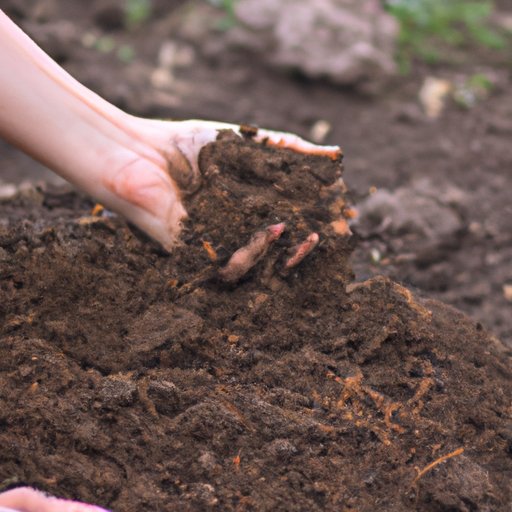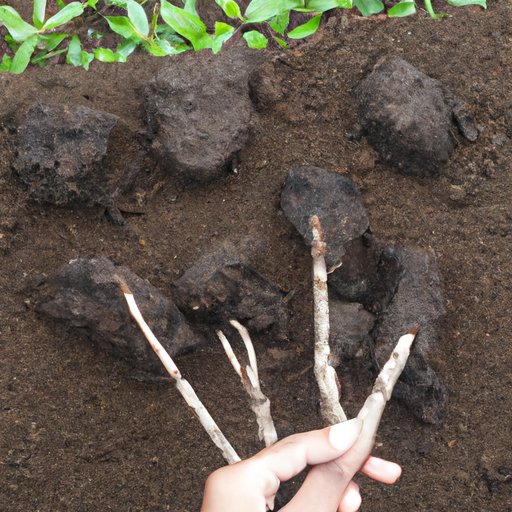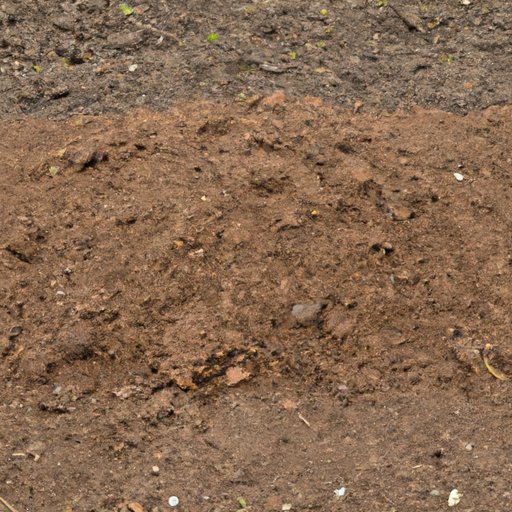Introduction
Clay soil is one of the most common types of soil found around the world. It is composed of very small particles that are tightly packed together, making it difficult for water and air to penetrate. While clay soil can be challenging to work with, it does have some benefits. With the right plants and care, you can create a thriving garden in clay soil.
In this article, we will explore what grows best in clay soil and provide a gardener’s guide to planting and caring for crops in clay soil. We will also discuss how to improve clay soil for maximum plant growth and the benefits of growing plants in clay soil. Finally, we will provide some tips for making clay soil fertile and ready for planting.
Gardener’s Guide to Planting and Caring for Crops in Clay Soil
When choosing plants for clay soil, look for varieties that do well in wet conditions and are tolerant of heavy soils. Some examples include tomatoes, peppers, squash, beans, peas, corn, onions, garlic, and potatoes. Additionally, consider adding herbs such as thyme, oregano, basil, chives, and parsley to your garden.
Before planting, prepare the soil by removing any rocks, weeds, and debris. If possible, till the soil to break up the large clumps. This will help improve drainage and allow air and water to reach the roots of the plants. You may also want to add compost or other organic matter to the soil to further improve its structure.
When planting, create raised beds or mounds of soil to help improve drainage. Plant seeds or seedlings at the same depth they were in the original container. Water thoroughly after planting and continue to water regularly throughout the growing season. Mulch can also help retain moisture in the soil.
To maintain crops in clay soil, monitor the soil moisture levels. If it becomes too dry, water deeply. If it becomes too wet, aerate the soil with a garden fork or rake to improve drainage. Additionally, rotate crops every year to reduce disease and pests. Fertilize your plants as needed to boost nutrition.

How to Improve Clay Soil for Maximum Plant Growth
Improving clay soil can be beneficial for many reasons. Adding organic matter such as compost or manure helps improve the soil structure and adds nutrients. Compost is especially beneficial because it increases the amount of beneficial organisms in the soil and improves drainage. Aerating the soil with a garden fork or rake can also help improve drainage and oxygen levels in the soil.
Another way to improve clay soil is to install a rainwater collection system. This allows you to capture and store rainwater for use during dry periods. Additionally, adding mulch to the soil can help retain moisture and reduce evaporation. Finally, fertilizing your plants with an organic fertilizer can boost nutrition and help plants thrive.
Benefits of Growing Plants in Clay Soil
Despite its challenges, there are several benefits to growing plants in clay soil. One of the biggest benefits is increased water retention. Clay soils hold more water than other types of soil, which can be beneficial during dry periods. Additionally, clay soils tend to have more available nutrients than sandy soils, which can help improve plant growth.
Clay soils also promote deeper root development. The tightly packed particles of clay soil require plants to develop longer and deeper roots in order to access nutrients and water. This can help improve the overall health of the plants and make them more resilient.

Tips for Making Clay Soil Fertile and Ready for Planting
Making clay soil fertile and ready for planting can be a challenge, but with the right approach, it can be done. Start by adding organic matter to the soil. This can be anything from compost to manure to cover crops. Next, add fertilizer to boost nutrition and help the plants grow. Rotating crops each year can also help reduce disease and pests.
Using mulch is another great way to retain moisture in the soil and reduce evaporation. Finally, installing a rainwater collection system can provide an additional source of water for your plants during dry periods. With these tips, you can make clay soil fertile and ready for planting.
Conclusion
Clay soil can present some challenges, but with the right plants and care, it can be a great medium for growing a variety of crops. Choose plants that are tolerant of wet conditions and heavy soils. Prepare the soil before planting by removing rocks, weeds, and debris and tilling the soil. Additionally, add organic matter, compost, and fertilizer to boost nutrition. Finally, use mulch to retain moisture and install a rainwater collection system to provide an additional source of water during dry periods.
With the right approach, you can create a thriving garden in clay soil. With the tips provided in this article, you can ensure your plants get the best start and thrive for years to come.
(Note: Is this article not meeting your expectations? Do you have knowledge or insights to share? Unlock new opportunities and expand your reach by joining our authors team. Click Registration to join us and share your expertise with our readers.)
